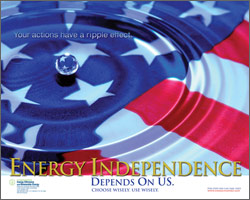In addition to Energy Awareness Month, Children’s Health Month is observed each October. This year’s theme is “Promoting Healthy School Environments.” The U.S. Environmental Protection Agency (EPA) is offering webcasts throughout October to raise awareness of protecting children from environmental risks, such as poor indoor air quality, while they a re at school. These webcasts begin tomorrow (October 5) with an overview of safe and healthy school environments. Topics of subsequent webcasts include high performance schools, chemical management in schools, and Healthy SEAT, an EPA software tool to help school districts evaluate and manage their facilities for key environmental, safety and health issues.
re at school. These webcasts begin tomorrow (October 5) with an overview of safe and healthy school environments. Topics of subsequent webcasts include high performance schools, chemical management in schools, and Healthy SEAT, an EPA software tool to help school districts evaluate and manage their facilities for key environmental, safety and health issues.
GLRPPR currently maintains three Topic Hubs related to pollution prevention for schools: Pollution Prevention for Arts Education, Integrated Pest Management (IPM) for Schools, and Mercury–Schools. “P2 for Arts Education” describes the health and environmental hazards found in art education, including the theatrical arts. Ideas for pollution prevention in the art classroom, including suggestions for alternative, more environmentally-friendly materials and products, are provided. The contents of this Topic Hub are applicable to all educational institutions, including K-12, colleges and universities, and informal education programs. Theater groups may also benefit from the information provided in the Topic Hub. “IPM for Schools” describes the hazards and disadvantages associated with traditional pest management practices, and introduces the concept of IPM as a means to improve the health and safety of all school facilities while preventing waste and pollution. The IPM for Schools Topic Hub is useful for K-12 schools, colleges, universities and day-care facilities. “Mercury–Schools” provides information about the key locations in school facilities where mercury may be found, health hazards associated with mercury exposure, and opportunities to reduce or eliminate mercury in school facilities.
There are several green/sustainable school programs at the state level in our region. In Illinois, the Illinois Environmental Protection Agency and the Waste Management and Research Center collaborate on the Greening Schools project, and the project’s web site is a rich resource for those interested in more environmentally-friendly school buildings as well as incorporating pollution prevention concepts into curricula. Wisconsin has a Green and Healthy Schools Program that includes a recognition program. Michigan Healthy Schools, the Pennsylvania Green Government Council’s Green Schools program, and the New York State Department of Environmental Conservation Green Schools! program are other examples. Resources for green school buildings are available in Minnesota and Ohio. The Indiana Department of Environmental Management educates teachers about environmental issues and potential hazards in school buildings through its e-newsletter, The Notepad.
For our colleagues north of the border, the Canadian Pollution Prevention Information Clearinghouse (CPPIC) provides pollution prevention lesson plans, tools and pollution prevention plan for the classroom. Look under “Education Programs” on the CPPIC web page for information on other Canadian green/sustainable school programs, including Ontario EcoSchools and the SEEDS Green Schools program.
Continue monitoring this blog for information on other programs and links related to green schools in the U.S. and Canada.

 In honor of
In honor of  Check out the web site for
Check out the web site for